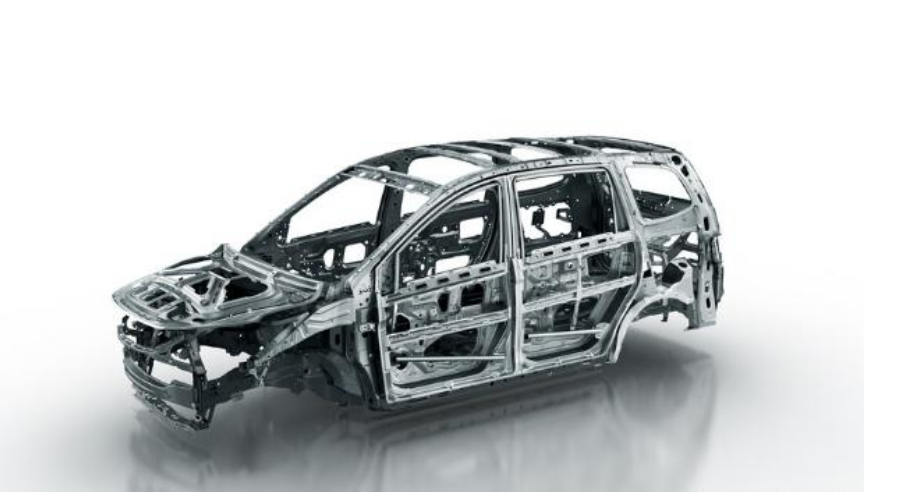- Automobile sheet metal processing is also a technical means of automobile research and development. In this regard, automobile sheet metal is equal to automobile sheet metal research and development, which means that automobile research and development must evaluate the body, that is, except for the spraying work of anti-corrosion and decoration on the body, all the rest Work. Such as the analysis of the car body structure, the measurement of the car body, the shaping of the car body sheet metal, the tensile correction, the stress relief welding, and the assembly and adjustment of the car body accessories.
- Automobile sheet metal is also a processing method for automobile maintenance. It is also called cold work. To put it directly, if the appearance of the body is damaged and deformed, the sheet metal process is required. Automobile collision repair has been developed from the original “smashing, pulling and welding repair” to the secondary manufacturing and assembly of the body.
- The repair of the collision accident vehicle is no longer a simple banging of the car sheet metal, and the quality of the repair cannot be observed by the naked eye alone to observe the appearance and gaps of the vehicle. Maintenance personnel must not only understand the technical parameters and dimensions of the car body, but also master the characteristics of the car body material, the transmission of the force characteristics, the deformation trend and the force point of the car body, and the production process of the car body such as welding process.
- Sheet metal is a type of auto repair. It is mainly aimed at the appearance of the body. The replacement, repair, orthopedic and baking paint of the external body (such as bumpers and doors) also belong to the sheet metal work area. There are specific divisions of labor in the sheet metal. The above content of sheet metal in a broad sense is fully covered.
- The sheet metal in the narrow sense is only to replace the outer body, and to use welding, orthopedics, etc. to generally repair the shape of the car. In the broad sense, the sheet metal is putty, polished, painted, and polished. They all have their own division of labor. When we say sheet metal, we generally refer to it in a broad sense.
Sheet metal materials in the electrical and electronic industry include:
⒈ Ordinary cold-rolled sheet SPCC SPCC refers to the continuous rolling of steel ingots into steel coils or sheets of required thickness through a cold rolling mill. The surface of SPCC has no protection and is easily oxidized when exposed to the air. Especially in a humid environment, the oxidation speed is accelerated, and dark red rust appears. The surface should be painted, electroplated or otherwise protected when in use.
⒉ Galvanized steel sheet SECC The substrate of SECC is a general cold-rolled steel coil, which becomes an electro-galvanized product after degreasing, pickling, electroplating and various post-treatment processes in a continuous electro-galvanizing production line.
SECC not only has the mechanical properties and similar processability of ordinary cold-rolled steel sheets, but also has superior corrosion resistance and decorative appearance. It has great competition and substitution in the market of electronic products, home appliances and furniture. For example, the commonly used computer case is SECC.
⒊ Hot-dip galvanized steel sheet SGCC Hot-dip galvanized steel coil refers to the semi-finished product after hot-rolling pickling or cold-rolling, after cleaning, annealing, and immersing it in a molten zinc bath with a temperature of about 460 ° C, so that the steel sheet is plated with The zinc layer is then tempered, leveled and chemically treated. SGCC material is harder than SECC material, has poor ductility (avoid deep drawing design), thicker zinc layer and poor weldability.
⒋ Stainless steel SUS301 The content of Cr (chromium) is lower than that of SUS304, and the corrosion resistance is poor, but it can obtain good tensile force and hardness after cold working, and has good elasticity. It is mostly used for shrapnel springs and anti-EMI.
⒌ Stainless steel SUS304 is one of the most widely used stainless steels. Because it contains Ni (nickel), it is richer in corrosion resistance and heat resistance than steel containing Cr (chromium). It has very good mechanical properties, no heat treatment hardening phenomenon, no elasticity.
Related searches: cnc machining aluminum car parts, cnc brass car parts, cnc stainless steel car parts

